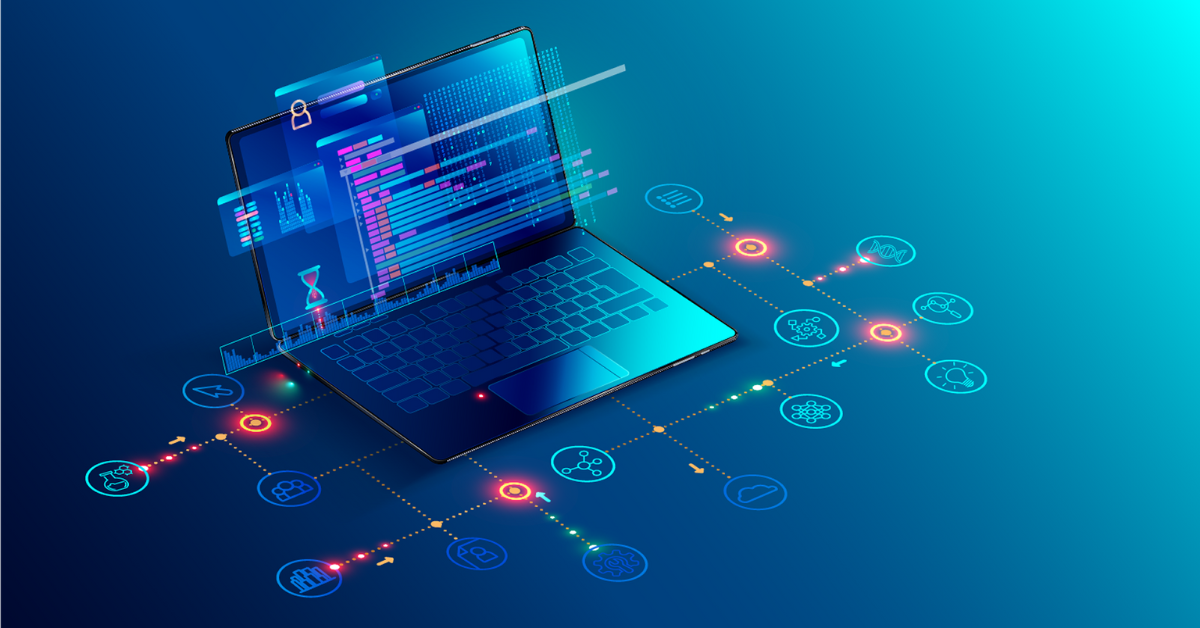The Small Data Problem in Scientific Research
Data sits at the center of modern scientific research and serves as the foundation of discovery and differentiation. However, many R&D organizations...
Software & AI
Scientific Software Development, Legacy Software Modernization, UI/UX,
Predictive Modeling, Custom Simulations, Web Applications,
Multimodal Knowledge Systems, API Development
Data Systems
Data Engineering, Process Engineering, Data Pipelining and Augmentation,
Workflow Automation and Redesign, Scientific Data Management Systems,
Data Capture Systems, High Volume Data Management, Database Design
Strategy & Design
R&D AI Transformation, R&D Digital Transformation, Strategic Roadmap Development,
Data System Design, Process Analysis
Infrastructure
Technical Upskilling for Scientists & Engineers, R&D Systems Integration,
R&D IT and Data Ops
Core Technologies
Machine Learning, Deep Learning, Baysian Optimization, Generative
Adversarial Networks, Graph Neural Networks
Advanced Modeling & Systems
Reasoning Models, Multi-Scale Modeling, Surrogate Modeling,
Simulation, Image Processing, Agentic AI Systems
Language & Generative AI
Natural Language Processing, Foundation Models, Generative AI,
Large Language Models
Discovery & Development
Property Prediction, Formulation Optimization, Structure Generation,
Materials Discovery, Materials Compatibility
Data Insights
Text Data Mining, Automated Data Analysis, Time Series Analysis,
Multimodal Search, Literature and Patent Search, Dashboards, Data Visualizations
Decision Support
Chatbots, Predictive Maintenance, Preventative Maintenance, AI
Recommendation Systems
Making Sense of Agentic AI | You can now watch this timely webinar on agentic AI in materials & chemistry R&D on-demand.

With the increasing importance of AI and machine learning in science and engineering, it is critical that the leadership of R&D and IT groups at innovative companies are aligned. Inappropriate budgeting, policies, or vendor choices can unnecessarily block critical research programs; conversely an "anything goes" approach can squander valuable resources or leave an organization open to novel security threats.
At the heart of the tension between R&D and IT is the fundamental fact that the needs of research groups are qualitatively different from most standard business activities, often in ways that are unfamiliar to IT:
Some of these new technologies, like advanced AI, that researchers are adopting also hold the promise of solving some of the challenges that IT has in providing safe and scalable solutions for research groups.
 An effective research organization should always be trying new things, whether different methods, different materials, different designs, different equipment or different algorithms. This is not just for the sake of doing new things but because new, relevant, workflows and technologies should at a minimum be evaluated and, if effective, adopted. R&D's frequent flux is in contrast to many other parts of a business: financial reports should be consistent over time, data warehouse schemas should only evolve gradually, manufacturing processes shouldn't change from day to day, and so forth.
An effective research organization should always be trying new things, whether different methods, different materials, different designs, different equipment or different algorithms. This is not just for the sake of doing new things but because new, relevant, workflows and technologies should at a minimum be evaluated and, if effective, adopted. R&D's frequent flux is in contrast to many other parts of a business: financial reports should be consistent over time, data warehouse schemas should only evolve gradually, manufacturing processes shouldn't change from day to day, and so forth.
Unfortunately, novelty can strain standard IT policies and resources. For example, a great deal of modern lab equipment is essentially a PC with specialized instruments attached to it - often running an outdated OS and software and all too frequently with known security vulnerabilities - which cannot be upgraded easily. Or the adoption of a novel lab methodology requires the ability to search a new type of semi-structured data that it generates, requiring a new database. Or researchers want to be able to run complex third party research code to replicate or adapt a new analysis.
Often, exceptions need to be granted to policies, or IT resources spent, for R&D to be successful.
Modern machine learning technologies, such as Large Language Models (LLMs), exemplify the need for flexibility in processes. To make use of them, either an IT organization needs to be able to deploy and scale 3rd party GPU-based containerized compute resources along with the large data sources required for using these, or policies need to be developed and enforced allowing the use of proprietary data with AI provider's APIs. As a fast-moving area of work, best practices and preferred services are themselves changing from month to month.
When research is a critical need for a business, like in materials science and the life sciences, IT needs the flexibility, expertise and resources to adapt to the needs of R&D.

Managing an organization's IT needs is a complex operation, and there are playbooks for controlling complexity: standardizing portfolios, removing redundant solutions, reducing opportunities for security issues, providing common solutions to needs, and so on. For most business users some easy decisions can be made, such as: using only the most recent versions of a preferred OS, providing users with a standard laptop configuration from a single vendor, having a single data lake for the entire company, strictly controlling available software and internet access.
But to perform their jobs, researchers frequently need access to resources which are not typical for an everyday business use-case. It could be something as simple as larger displays to support high-density data visualization, access to sites that may not be on typical business-oriented whitelists, or higher-speed network access for data transfer. But it can also be machines with specific GPU capabilities, the ability to compile and run arbitrary code, or the ability to spin-up containerized infrastructure. Atypical use-cases need to be recognized when deciding policies and assigning budgets: R&D user's needs are different.
Additionally, the resources that researchers require also vary over time: a researcher may not need anything unusual in terms of computing power 90% of the time, but every few months they need a week of time on a GPU cluster to train a machine learning model; or every week they need to upload large amounts of data from an instrument, but otherwise have normal network usage.
Even stepping outside the constraints of individual user's needs, R&D groups tend to have different needs than other business use-cases. For example scientific data tends to not fit either a fixed-schema data warehouse, or a data-lake of text documents, but instead collections of highly structured array or image data. Typical off-the shelf data storage solutions frequently don't work well with research data.
Care needs to be taken when looking at external vendors: many IT and software consulting firms do not have any experience with the particular needs of scientific research and can't converse with researchers on their own terms. When looking for management or software consulting services for R&D needs, success is more likely when working with an external partner with deep expertise in interfacing with scientists and engineers. Enthought has over 20 years of experience helping companies in this way.
When it comes to R&D, IT needs to be prepared and equipped to support a diversity of hardware, operating systems, software, data storage and other technologies.
Most scientists and engineers are confident computer users, many know how to code and are comfortable with SQL, HTML and many other standard technologies. But every researcher's knowledge has limits: they may not be familiar with containerized deployment; they may need help installing complex machine learning libraries like TensorFlow into their analysis environments; or accessing and provisioning cloud services; or not know how to access 3rd party large language model APIs.
Additionally, researchers may not be as familiar with best practices and security threats that come with these technological choices. From query and prompt injection, to OAuth identity management, to typosquatting in open-source package management systems, researchers need to be aware of the potential issues that their workflows may come with. IT needs to provide support via education, monitoring and timely vulnerability notifications.
Companies that want to support modern AI workflows must have IT and DevOps employees who can work closely with researchers to provide the support, services and education they need, particularly when it comes to cloud computing, containerization and orchestration, and management of analysis environments.
 Ironically, the new technologies which cause some of these challenges can also be a key to providing solutions for them. Cloud technologies, whether internal or external, permit unprecedented flexibility in providing computing or data resources.
Ironically, the new technologies which cause some of these challenges can also be a key to providing solutions for them. Cloud technologies, whether internal or external, permit unprecedented flexibility in providing computing or data resources.
Previously a researcher or lab might need to be provided with a dedicated GPU workstation that was capable of handling their peak computing workloads. Now there is the possibility of providing dedicated compute capability that can handle day-to-day workloads, coupled with access to cloud resources that can be used to cover occasional surges in need or access to GPUs.
Web-based analysis technologies like JupyterLab and JupyterHub offer the promise of being able to provide self-contained, sandboxed environments for users. Researchers can work with familiar notebook-based tools and have full control over their environments, installing whatever packages they need, but in a way that is isolated from internal corporate networks. If such an environment is compromised it may be serious for the worker and their immediate research, but it is unlikely to become a company-wide breach.
Businesses which can acquire these capabilities will have a distinct advantage in harnessing the new tools of scientific computing. As AI and machine learning become more mainstream, research-oriented companies in life sciences and materials technology will need to ensure that their IT and R&D groups are aligned to provide the data and cloud computing capabilities needed to support researcher's needs. And inevitably the alignment will need to grow even closer for whatever technologies emerge next.
Learn more about how scientific data is different here
.png)
Data sits at the center of modern scientific research and serves as the foundation of discovery and differentiation. However, many R&D organizations...

This article was originally published on Forbes and can be foundhere.

This article references topics presented by Michael Connell, EdD during our recent webinar, Making Sense of Agentic AI: A Strategic Briefing for...